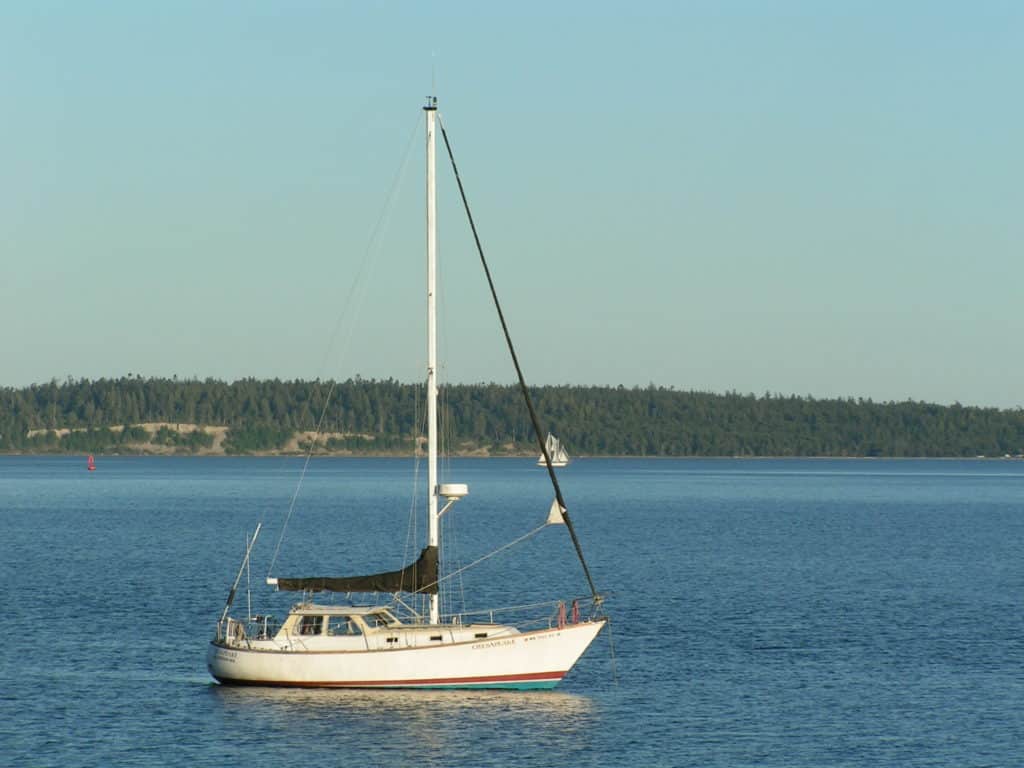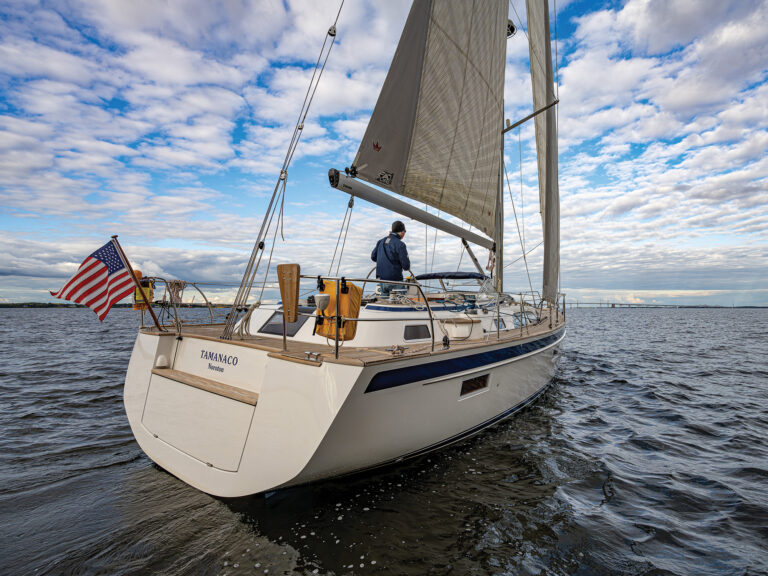
A few years back, I departed Port Angeles, Washington, on board a fine little Truant 33 named Chesapeake and pointed her bow north toward the wild British Columbia coastline. I was 17 years old, and by then I had perfected the art of avoiding school by pirating the family boat and leaving the country for a few weeks at a time. The fact that I was using a boat called a Truant 33 as a means to enable my truancy was no small irony, but I can thank Truant Marine for a lot more than choosing a tasteful name.
The Truant 33 was designed by the legendary William Garden as a small seaworthy sailing vessel for cruising the cold, turbulent waters of the Pacific Northwest year-round in safety and comfort. Rare on vessels this size, the Truant 33’s pilothouse offers welcome protection from the region’s famous “liquid sunshine.”
The Truant 33 was first built in 1977 on Saltspring Island in British Columbia, where Truant Marine produced 30 or so vessels before selling the molds to Saturna Yachts in 1981. Saturna then built the almost-identical Saturna 33 throughout the ’80s, and eventually sold the molds to Wiggers Yachts in Ontario. There are usually a few used vessels to be found on the market, especially in the Pacific Northwest, with a price tag ranging from $30,000 to $60,000.
The Truant packs many unique features into her modest 33 feet, most notably the incorporation of the pilothouse and a very roomy and usable layout down below for living aboard. For those who prefer a more traditional cabin top, the offshore version was built without a pilothouse.
There are various interpretations of the classic layout, but the most common one is with a quarter berth and nav station to starboard with the inside steering station just forward and a dinette to port, which folds down into a double berth. Moving forward, there is a step down to a small enclosed head and hanging locker to starboard and a galley to port that rivals that of many 40-foot vessels. In the bow is either a large V-berth with stowage under or two staggered crew bunks with one raised to make for even more stowage space below. There is standing headroom throughout the cabin, and space to sleep up to five people.
Abovedecks, the Truant 33 has a very secure cockpit, which is given further protection by the pilothouse. The cockpit is small — a nice feature in heavy seas, but it makes for a bit of a squeeze when accommodating guests — though the roomy cabin makes up for that space.
She has a very prominent bow and canoe stern, which, along with her pilothouse, make her stand out in every harbor she visits.
She also sails surprisingly well for such a heavy boat of this size, and in rough weather gives a feeling of security and seaworthiness. The 30-inch-wide side decks and high bulwarks make it easy and safe to move around deck.
Most Truant 33s were set up as sloops, but I have seen where some owners added an inner forestay and running backstays to convert to a cutter rig. Underneath the waterline, she sports a long fin keel with a rudder on a skeg.
In my sailing career, I have more memories made aboard the Truant 33 than on any other design. Along the way we encountered plenty of challenges, yet she took me there and back again safely every time. And she still does.
Specs
| LOA | 33′ (10.06m) |
| LWL | 26’9″ (8.15m) |
| Beam | 10’8″ (3.25m) |
| Draft | 5’4″ (1.62m) |
| Sail Area | 505 sq.ft. (46.91 sq. m) |
| Ballast | 5,000 lb (2,268 kg.) |
| Displacement | 13,500 lb (6,124 kg) |
| Ballast/Displacement | 0.37 |
| Displacement/Length | 315 |
| Sail Area/Dispalcement | 14.3 |
| Water | 100 gal (378 L) |
| Fuel | 100 gal (378 L) |
Ryan Langley is a 24-year-old sailor, adventurer and writer from Washington state.








